So, are you trying to decide whether to go with Jumbo Vs Medium Jumbo Frets on your guitar? Then, you’ve come to the right place! In this article, I’ll reveal all the pros and cons of each fret size!
Keep reading to learn more!
You can use the table of contents below to take you to the area that interests you. Click on the little box to open it and then click on the section of the article you want to read, or you can read from start to finish if you want the full fret size experience!
The Short Answer
Jumbo and medium jumbo frets each have their uses, advantages, and disadvantages. Jumbo frets are usually found on guitars designed for playing Metal, while medium jumbo frets are used for Rock and “all-purpose” electrics. Lead guitar players may favor jumbo frets, and rhythm players are typically more comfortable with the medium jumbo size.
Keep On Reading (Below) To Learn More
Jumbo Vs. Medium Jumbo Fret Dimensions
Haha, if only it were that easy!
There are no absolute fret dimensions for a jumbo versus a medium jumbo fret. Various fret manufacturers make them all a little different. However, we can say that medium jumbo are Less wide and less tall than jumbo frets.
Fret size is measured by the width and height of the fret wire.
Some manufacturers characterize fret size by their overall width, with less emphasis on fret height. However, wider frets are usually taller than narrower frets, and fret height usually has the most significant effect on playability!
So, some manufacturers will call their sizes narrow, medium, and wide.
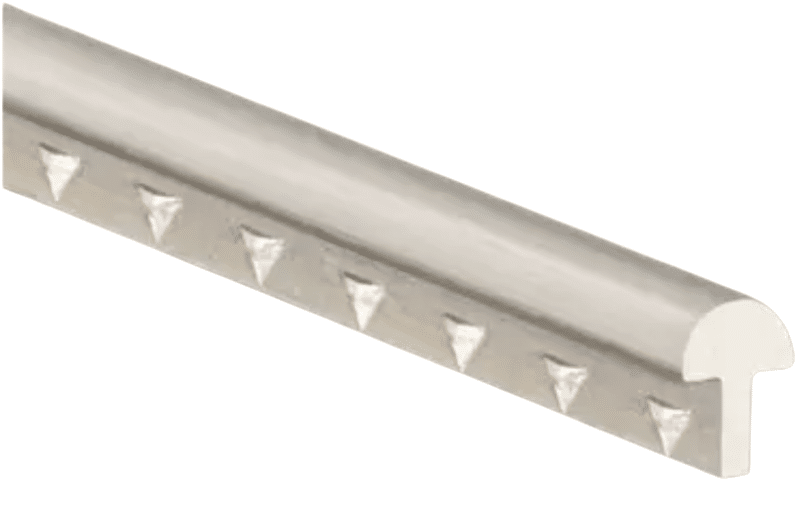
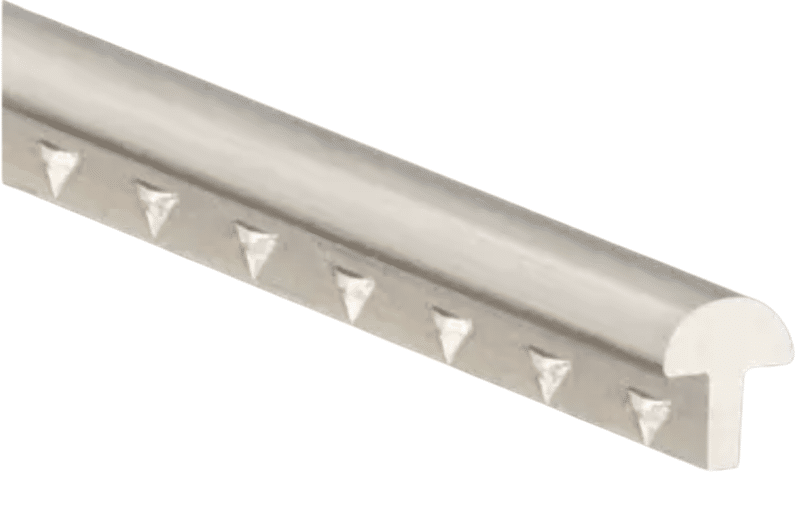
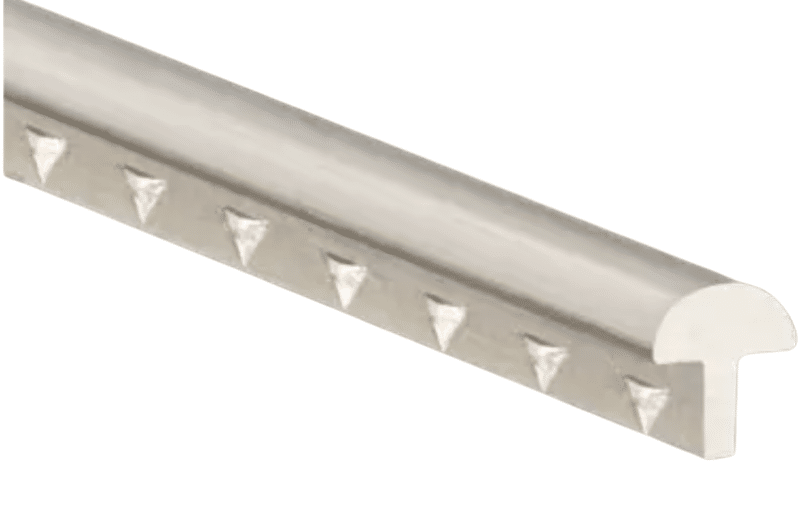
Others can offer a more extensive variety of fret sizes to choose from.

Features Of Jumbo And Medium Jumbo Frets

Here are the pros and cons of jumbo and medium jumbo frets and how they can affect the way a guitar neck feels, plays, and sounds.
These generalizations are based on my opinion and playing experience. Therefore, they may vary from one guitar to another, depending on neck size and shape, as well as fretboard radius and tonewood.
You can click on each of the comparisons in the table to get more information.
| Comparison | Jumbo Frets | Medium Jumbo Frets |
|---|---|---|
| Finger Pressure | Similar to jumbo | Similar to medium jumbo |
| Chords | Less comfortable | More comfortable |
| Single Notes | More comfortable | Less comfortable |
| Thin Strings | Easier to bend out of tune | Harder to bend out of tune |
| Sliding Notes | Similar to jumbo | Similar to medium jumbo |
| Hammer-Ons | Harder to do quickly | Easier to do quickly |
| Pull-Offs | Harder to do quickly | Easier to do quickly |
| Bending Notes | Easier | More difficult |
| Finger Vibrato | Easier | More difficult |
| Note Sustain | More | Less |
| Guitar Type | Metal (shredding) | Rock & All-purpose |
| Price | More costly | Less costly |
Keep On Reading (Below) To Learn More About Each Topic
Fret Size Effect On Neck Feel
The feel of a guitar neck is dependent on the following characteristics.
- Neck size, shape, tonewood, and finish
- Fretboard tonewood
- Fretboard radius
- Fret size and shape
With medium jumbo frets, the top of the fret is closer to the fretboard. Therefore, when you press down on a string, your fingers make more contact with the wood. This increases the frictional force between your fingers and the fretboard, making it more challenging to do string bends and finger vibrato.
Jumbo frets help correct this problem. However, because there is more space between the bottom of the strings and the fretboard, it’s easier to put notes out of tune (sharp) if you press down too hard, especially with the thinner strings.
However, the medium jumbo frets give you a more “vintage” feel than the jumbo size. This difference in feel can affect what you play and how you phrase the note dynamics.
How About Playability?

Here are some of the things that can affect the way medium jumbo and jumbo frets make a guitar neck play.
Finger Pressure
Generally speaking, if the string action (height from the top of the frets) and gauge are the same, then the amount of finger pressure it takes to correctly play a note at any particular area of the fretboard is essentially the same.
However, as mentioned above, bending notes out of tune (sharp) with jumbo frets can be easier than with medium jumbo frets. So it’s really a matter of getting used to how each guitar plays.
Chord Playing
Guitarists, especially beginners, generally find that medium jumbo frets make playing chords on the lower part of the neck more comfortable than jumbo frets. Guitars with jumbo frets usually have a flatter fretboard radius (12 inches and up), which only adds to the problem.
Single Notes And Soloing
Generally speaking, playing single notes and solos all over the neck on guitars with jumbo frets is easier than with medium jumbo frets. This is because jumbo fret necks usually have a flatter fingerboard than those with smaller frets and are specifically designed for lead guitarists.
String Gauge
String gauge is a big playability factor. Thin gauge strings are king when it comes to string bending and vibrato.
However, using very thin gauge stings (a 0.008 high-E string or lower, yes, you can get a 0.007 Dunlap string set) with jumbo frets can make it easy to press down too hard when playing a note and make it sound sharp.
Once you get used to the touch required, it generally isn’t a problem, especially if you’re an experienced player.
Note Slides, Hammer-Ons, And Pull-Offs
Sliding notes is not really a factor when it comes to medium jumbo versus jumbo frets. However, some jumbo frets have a steeper crown profile than usual, which could make the slide more difficult if you press too hard.
I find hammer-ons and pull-offs a little trickier to do very rapidly on jumbo frets, probably due to the tendency to hammer-on too hard. However, you can overcome this by practicing with a metronome and adjusting your touch as you work it up to speed.
Bending Notes And Finger Vibrato
Bending notes and vibrato with the fingers is easier with jumbo frets, especially at the lower part of the neck and if you have small hands.
Larger frets allow you to bend the string more from the side with less of a tendency to push it down too hard against the fretboard. Beginning players tend to clamp down on the neck when they bend and do vibrato, which makes it more difficult and can wear down the frets quicker than a lighter touch.
Does Fret Size Effect Tone?
No, tone is not dependent on the fret size.
Fret material could slightly impact tone, but most people can’t hear it. For example, stainless steel frets could make the tone a little brighter compared to nickel frets.
How About Note Sustain?
Most players think of an electric guitar’s acoustic sustain as coming from its body material and thickness, which is the primary determinant. So, for example, a Les Paul guitar will have considerably more sustain than a Stratocaster.
However, larger frets have more mass, so jumbo frets typically give notes more sustain than medium jumbo frets.
Typical Guitar Type And Price Range
We can make the following generalizations with regard to fret size.
Do Certain Guitars Come With Specific Fret Types?
Yes, electric guitars specifically made for playing Metal tend to have jumbo or heavy frets. In contrast, Rock and “all-purpose” electrics typically have frets ranging from medium jumbo to small (vintage) sizes.
What About Price Range?
The price range for electric guitars depends on many things, such as tonewoods, craftsmanship, and electronics. However, all things being equal, guitars with jumbo frets will typically cost more than medium jumbo.
High-quality guitars with jumbo frets are made by several manufacturers, especially in the Ibanez and ESP LTD product lines.
So, Which Fret Size Is Best?
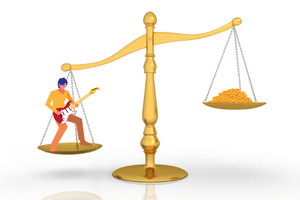
There’s no “one best” fret size for an electric guitar. Instead, it can depend on things like your playing style, hand size, string gauge, and guitar scale length.
Rhythm guitar players tend to favor medium jumbo frets, while lead guitarists may like the feel and playability of jumbo frets. You may not have a particular preference if you play a combination of both styles.
Related Article ➡ How Long Do Guitar Frets Last? – Your Essential Guide!
Don’t Judge A Guitar By Fret Size Alone!

Ultimately, you should choose the guitar that sounds and plays the best for you, not because of its fret size. Experienced players will know what they’re looking for, while beginners will have to experiment and perhaps change guitars as they progress in their training.
Play as many different guitars as possible to get an understanding of what’s available and how it works for you.
A Guitar Setup Can Make All The Difference!
It’s essential to understand that a guitar needs to be set up correctly to play well, and adjustments may be required to make the guitar play right and accommodate the guitar player. What you think is a fret size problem may just be something as simple as a string height or truss rod adjustment.
A proper setup can make the difference between a guitar you like and one you love!
Can You Change The Fret Size Of Your Guitar?
Yes, it is possible to change the fret size of your guitar. For example, you can go from medium jumbo frets to jumbo size.
For bolt-on necks, you can swap one neck for another of a different fret size, assuming that the scale length of the replacement neck is the same as the original one.
If the guitar has a glued-in neck, the old frets will need to be removed before the new-size frets are installed, leveled, crowned, and polished. This should only be done by someone with the proper training and tools, or the guitar neck could be permanently damaged!
If the guitar neck has a binding, replacing the frets is more time-intensive.
The cost of changing the fret size on a guitar can be cost-prohibitive. It’s probably better to trade the guitar in for one you like better or keep it and add another one to your collection.
Can You Mix Fret Sizes On The Same Neck?
No, all the frets on a guitar’s neck should be the same size.
If a single fret needs to be replaced, it’s best to get one from the same manufacturer, to ensure that the fret’s shape, height, width, and material are identical to the others!
If you’re not sure, contact the guitar manufacturer to buy a replacement fret or get the proper specifications. You may need to send the guitar back to them to have the fret replaced without voiding the warranty.
Are You Qualified To Make Guitar Adjustments Or Modifications?
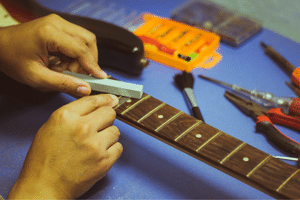
It’s great to work on your guitars, especially if you have a lot of them, but you should always be aware of your limitations.
Adjusting things like an electric guitar’s string height (action) or pickup height can be straightforward. Still, some adjustments require the proper training and experience, like adjusting a guitar’s truss rod.
Changing the frets on your guitar neck to a different size requires the proper training and equipment to level, crown, and polish the replacements!
When you doubt your ability to adjust, repair, or modify your guitar, it’s always best to bring it to a competent guitar technician or luthier (guitar designer & builder). You can permanently damage your guitar, and it might never play and sound right again!
Making modifications to your guitar can void its manufacturer’s warranty and cause permanent damage to the instrument. Certain modifications are irreversible, so you may be stuck with them, even if you desperately want to restore the guitar to its original condition!
I learned that the hard way over the years until I did a three-year apprenticeship in a guitar repair shop. Now I have my own home workshop with the proper training and equipment to safely maintain and repair all my instruments.
Remember: “When In Doubt, Send It Out!”
Frequently Asked Questions

Here are some of the questions I get asked about guitar frets.
If your question does not appear here, please put it in the comments, and I will get right back to you with an answer.
What Happens When Frets Wear Out?
Worn-out frets can cause string buzzing, premature string wear and breakage, and intonation problems. In addition, a worn-out fret can change its shape and height, which can damage the frets on either side of it.
If you favor playing on a particular area of the neck, these frets may wear out first, especially if you bend strings and do vibrato.
Can You Replace Just One Fret?
Yes, you can replace a single fret as long it is the same size, height, and material. However, it’s unlikely that only one fret needs to be replaced since frets tend to wear out together.
It’s ok to replace a single fret that is causing buzzing or intonation problems if you don’t have the money to get the others replaced, too.
How Much Does A Fret Job Cost?
It can easily cost between $350 and $650 to refret a guitar neck, depending on the type of frets used and the type of guitar neck. Jumbo frets are more expensive than medium jumbo or smaller ones. Stainless steel frets are more expensive than nickel.
Guitar necks that have a binding, like Gibsons, cost more to refret than Fender necks with no binding.
A guitar setup is usually included in the price of the refret. However, if the guitar needs a new nut, chances are that it will cost more.
What Is The Minimum Fret Height Before Refret?
Frets usually need to be replaced at a height of 0.023 to 0.025 inches (0.58 to 0.64 mm). It depends on the guitar’s neck and setup. No matter what, you won’t make it much lower than this without playing and intonation problems.
What Is The Lifespan Of Guitar Frets?
That depends on your playing style, how often you play the guitar and change your strings, and the quality of the frets. Stainless steel frets last much longer than nickel and will most likely be good for the lifetime of the guitar.
If you play several guitars, you’re unlikely to need a refret unless you gig professionally.
How Do You Know When To Replace Guitar Frets?
You may need to replace a guitar’s frets if they are dented or pitted or if you hear string buzz, a loss of note clarity, or have intonation problems.
Final Thoughts

I hope this article on jumbo vs medium jumbo frets helped answer some questions or clear up a few misconceptions.
There’s no absolute standardization when it comes to the terminology for fret size and shape. For example, one company’s jumbo fret can be bigger or smaller than someone else’s jumbo product.
There are a variety of pros and cons among fret sizes, and they can affect the way a guitar neck feels, plays, and sounds in many ways.
Fret size does not affect the tone of a guitar to a noticeable degree, but a larger size fret can help increase the instrument’s sustain.
Rhythm guitar players tend to like medium jumbo frets, while lead players gravitate toward jumbo frets, especially Metal guitarists. Jumbo frets are usually found on Metal (shredding) guitars. Rock and “all-purpose” electrics typically have frets ranging from medium jumbo to smaller sizes.
All things being equal, guitars with jumbo frets typically cost more than medium jumbo fretted instruments.
There isn’t a single best-size guitar fret. So play as many guitars as possible, and buy the guitar that plays and sounds best!
Related Article ➡ How To Keep An Electric Guitar In Tune

Tell Me What You Think

Please leave a comment below if you enjoyed this article, have any questions about guitar frets, or want to give your point of view. I will be happy to help you.
- Do you favor a particular guitar fret size? Why?
- If you have more than one electric guitar, did fret size play a role in your purchase?
- Do you think this article helped you find the guitar you need?
- What else is on your mind?

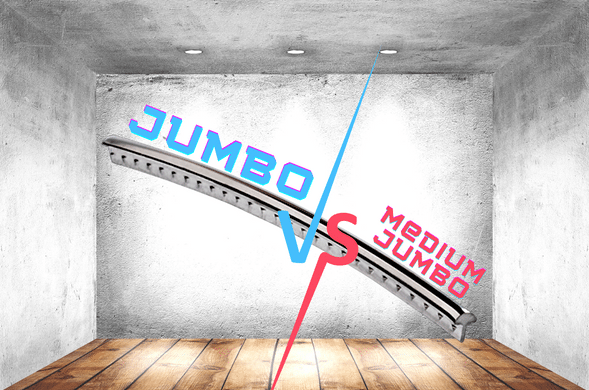

Hi Frank! Thanks for sharing your insights on Jumbo vs Medium Jumbo frets for guitar players. Your article is very informative and comprehensive, covering all the aspects that guitarists need to know to make an informed decision on fret size. I appreciate that you provided a comparison table highlighting the pros and cons of each fret size, how they affect play, and the type of guitar they’re best suited for. Your article is well-organized, with a helpful table of contents that makes it easy for readers to navigate the different sections. Overall, great job! Keep up the good work!
Hi, Amyas
I really appreciate your comments, and I hope that this article is helping you to choose a guitar with the fret size that’s best for you!
Please let me know if you have any questions or if there is any way I can help you with guitar frets.
Best,
Frank
Thank you for the excellent article over medium and jumbo fret sizes Frank, I learned a great deal I was previously ignorant of and I am sure the article will be helpful to many others as well.
You have done a really good job explaining how and why jumbo frets are usually desired by lead guitarists and the medium frets more suited to rhythm guitar players. This makes me wonder though if hand size of the individual player, whether he be a lead or rhythm guitarist, would play any role in the decision being made?
In other words, is it possible that a small handed lead guitarist might prefer the more proximal medium frets easier to work with their shorter fingers?
Hi, Joseph
Thank You for your comments.
Your hand size can make a difference in the feel and playability of various size frets. Neck shape and fretboard radius (flatness) & material (maple vs. rosewood, etc.) can also be a factor.
No matter what size your hands are, the best thing to do is try different guitars until you find one with a neck that feels good and plays well.
Best of Luck! 😎
Frank 🎸